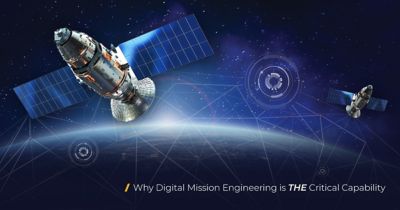-
-
Accédez au logiciel étudiant gratuit
Ansys donne les moyens à la prochaine génération d'ingénieurs
Les étudiants ont accès gratuitement à un logiciel de simulation de classe mondiale.
-
Connectez-vous avec Ansys maintenant !
Concevez votre avenir
Connectez-vous à Ansys pour découvrir comment la simulation peut alimenter votre prochaine percée.
Pays et régions
Espace client
Support
Communautés partenaires
Contacter le service commercial
Pour les États-Unis et le Canada
S'inscrire
Essais gratuits
Produits & Services
Apprendre
À propos d'Ansys
Back
Produits & Services
Back
Apprendre
Ansys donne les moyens à la prochaine génération d'ingénieurs
Les étudiants ont accès gratuitement à un logiciel de simulation de classe mondiale.
Back
À propos d'Ansys
Concevez votre avenir
Connectez-vous à Ansys pour découvrir comment la simulation peut alimenter votre prochaine percée.
Espace client
Support
Communautés partenaires
Contacter le service commercial
Pour les États-Unis et le Canada
S'inscrire
Essais gratuits
ANSYS BLOG
May 11, 2021
Achieving the Digital Mission Engineering Competitive Advantage: 5 Key Capabilities
In aerospace and defense, as in other industries, digital transformation is accelerating. In the U.S., for example, the Department of Defense published a digital engineering strategy to transform its engineering practices to meet the demands of exponential technology growth, complexity and access to information. The strategy also aims to address the rapidly increasing cycle times and costs of key programs. Many in the industry are now familiar with the concepts of the digital twin and the digital thread and the role that engineering simulation plays as a critical enabler in these technologies.

A key part of this overall digital transformation is the ability to simulate and analyze not just how individual components or subsystems will perform in isolation but how these components, subsystems and the entire engineered system will perform in a virtual mission environment as part of a system of systems. This has now been made possible by our recent acquisition of AGI, which brings together the combined power of physics-based simulation and digital mission assessments to deliver an integrated solution from the scale of the microchip to the scale of the mission, spanning the entire acquisition process. We call this digital mission engineering.
Why Digital Mission Engineering Is Critical
Fundamentally, simulation-based approaches enable us to bring innovation to market faster, with higher quality, lower cost and greater confidence in operational performance. In the case of digital mission engineering, it has been estimated that a program can be accelerated by as much as six times.
As an example of how these benefits are realized with digital mission engineering, consider the example of a sensor that is to be installed in a satellite. Reliable communication between the sensor, satellite and the ground station is a key requirement. A sensor typically contains thermally sensitive electronics and semiconductors — if it runs too hot or too cold, it may not perform as planned or in the worst case may fail entirely.
Throughout the orbital mission, the orientation of the satellite with respect to the sun changes, creating a highly variable thermal load on the sensor electronics. Using traditional design processes, the sensor and its electronics are designed in isolation based on the thermal exposure envelope of an anticipated mission. But what if the satellite’s mission changes in an unanticipated way once in orbit, resulting in an out-of-design thermal operating condition? What will the new thermal operating envelope be, and will the sensor be able to perform under these new thermal loading conditions?
With digital mission engineering, the impact of an orbital mission change can be simulated to provide a detailed performance assessment of the entire system, down to the level of the thermal impact on individual components like the sensor. This creates an integrated modeling and simulation environment from the microchip to the mission, providing rapid, critical insights in advance, allowing the mission scenario to be examined in a virtual environment before any changes are made. And the satellite scenario is just one example; the digital mission approach applies to all domain (land, sea, air and space) system of systems simulations.
Five Key Capabilities for Digital Mission Engineering
To successfully achieve the benefits of digital mission engineering, five key capabilities are required. These capabilities are uniquely delivered by combining mission assessment simulations into Ansys’ physics-based pervasive engineering simulation strategy.
- The first capability requires a suite of tools that are integrated and can connect across the entire product lifecycle from ideation to analysis to manufacturing and operation in the mission.
- The second, as was illustrated by the satellite example above, requires an integrated tool set able to assess performance from the scale of the microchip to the scale of the mission.
- With mission success at stake, the third capability requires that simulation solutions at all scales and lifecycle stages must be accurate, validated and proven in an industrial setting.
- The fourth, digital transformation, of which digital mission engineering is a part, includes a wide, heterogeneous network of digital tools. An open and collaborative simulation environment is therefore a must.
- Digital transformation is not just about technology. It also requires a cultural and workforce transformation. Training in new skills and implementation and operational support throughout are a fifth requirement.
Learn More from Thales Alenia Space
If you are interested in learning more about digital mission engineering and how leading companies are already deploying it in real-world situations, then view this webinar and listen to Marie Ansart, a Mission Analyst and Systems Engineer at Thales Alenia Space, describe her work in applying digital mission engineering to space exploration and maritime surveillance: Digital Mission Engineering at Thales Alenia Space